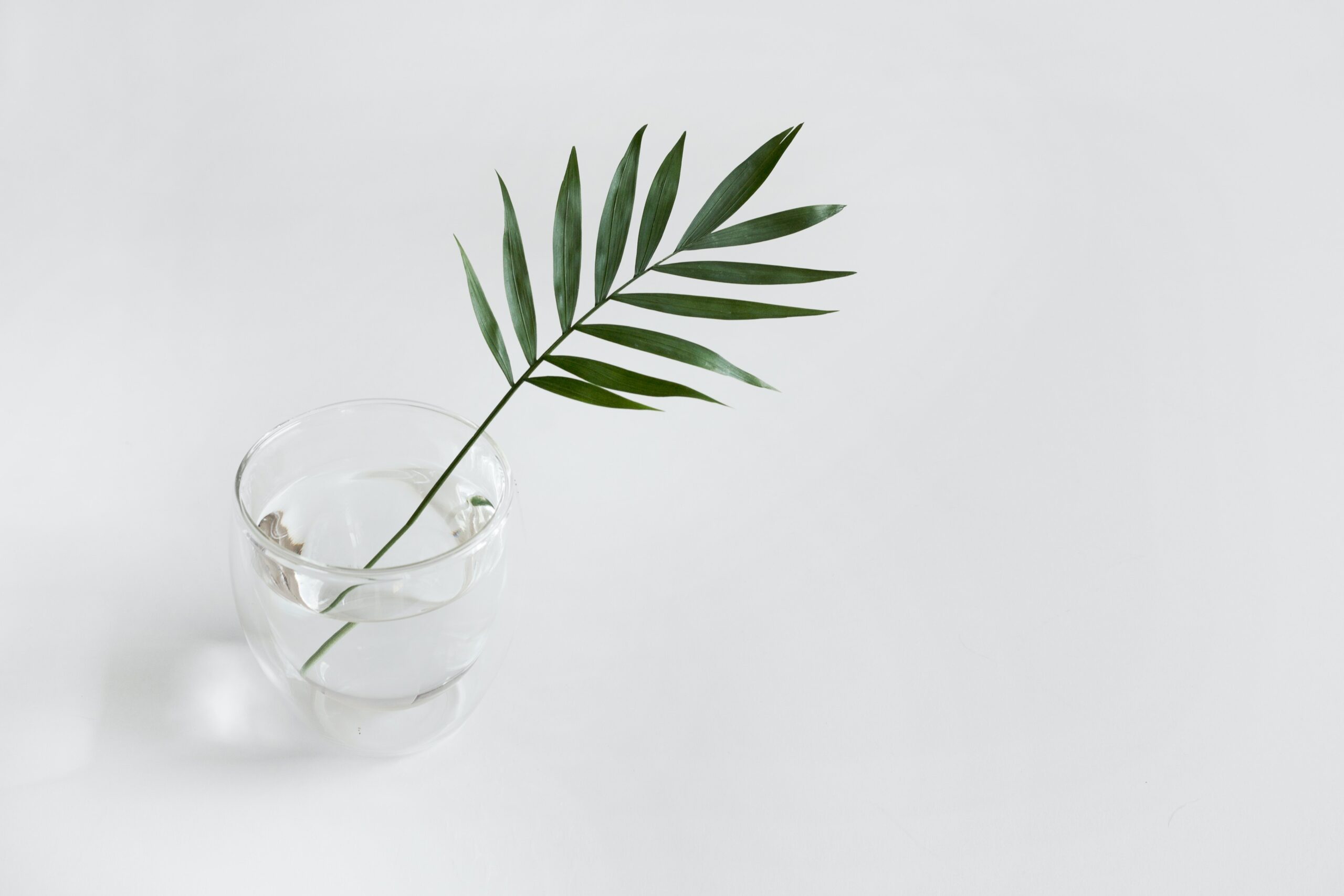Orchids are a beautiful addition to any home or garden, but they require special care in order to thrive. Repotting an orchid plant is a critical step in the process of caring for your plant, and it can be done with minimal effort. In this article, we’ll guide you through the steps of repotting your orchid and help you keep your plant healthy and blooming.
Have you ever wondered how to repot an orchid? It’s not as complicated as it may seem! With just a few simple steps, you can take care of your orchid plants correctly and ensure that they remain vibrant for years to come. Whether you’re looking for advice on how to repot an existing plant, or want tips on selecting the right pot and soil for the job, this article has all the information you need.
Repotting an orchid is an important part of keeping your plants healthy and blooming. The process can seem daunting at first, but with our step-by-step guide, you’ll soon be able to move your beloved orchids into new pots with ease. Read on for all the details on how to properly repot an orchid—you’ll be glad you did!
Gather The Necessary Supplies
“If you want something done right, do it yourself.” This rings true when it comes to repotting an orchid plant. Repotting can be a tricky task, but with the right supplies and knowledge, your orchid will flourish! Let’s take a look at what we need to get started.
Gathering the necessary supplies is the first step in repotting an orchid. You’ll need a pot with drainage holes, medium-grade bark chips, sphagnum moss, small stones or perlite, gloves, and scissors. Make sure your pot is slightly larger than the root ball of the plant; this will give room for new growth and help keep the roots cool.
Once you’ve gathered all of the supplies you need to begin repotting your orchid, it’s time to choose the right pot and soil. When selecting your pot, pick one that fits well with your decor but is also large enough for the root system of your orchid. The ideal soil for an orchid should be light and airy yet able to retain moisture; bark chips mixed with sphagnum moss and small stones should do the trick!
Choose The Right Pot And Soil
Now that you have all the supplies you need, it’s time to pick the right pot and soil for your orchid. It’s important to choose a pot with drainage holes so that your orchid’s root system doesn’t get too wet. The type of soil you use depends on the type of orchid you’re planting. For most species, a combination of fir bark, charcoal, tree fern fiber and sphagnum moss will provide the right balance of drainage and moisture retention.
When selecting a pot for your orchid, keep in mind that the plant needs room to grow. Choose one that is slightly larger than the current one and make sure it has good drainage. You can also opt for an unglazed clay pot as these are great for allowing air circulation around your orchid’s roots.
The last step before repotting is to water your orchid thoroughly. This will help soften its roots so they can be removed from its current pot more easily. Once watered, it’s time to carefully remove your orchid from its old home and prepare it for planting in its new one.
Remove The Plant From Its Current Pot
Having the right pot and soil is essential for repotting an orchid plant, but it’s just as important to remove the plant from its current pot correctly. According to gardening experts, more than 80% of houseplant deaths occur during transplanting—making this step a critical part of the process.
Removing your orchid from its current pot is actually quite simple. First, turn the pot upside down and gently tap it on its side until the root ball slides out. If necessary, use a pair of scissors to cut away any plastic pots that may be trapping the roots. Next, inspect the root ball for any signs of damage or disease before moving onto the next step.
Once you have inspected your orchid’s roots, you can then trim off any dead or discolored areas with pruning shears. Make sure not to cut too deep into healthy parts of the root system; simply snipping away at dead sections should suffice. Now you’re ready for the next step in repotting your orchid!
Trim Off Any Dead Roots
Once the orchid has been removed from its current pot, it’s time to trim off any dead roots. This is important for two reasons. Firstly, it ensures that the plant can absorb water and nutrients more effectively, as dead roots are not able to do this. Secondly, it helps promote growth of new healthy roots which will help the orchid stay healthy.
In order to trim off any dead roots, you’ll need to inspect the root system carefully. Look for roots that are brown or black in colour, mushy on touch and have no sign of life. Once you’ve identified these, use a pair of scissors or pruning shears to cut them away from the root ball. Be careful not to damage any living healthy roots while doing this as they are necessary for the plant’s health and longevity.
It’s important to remember that removing dead roots is just one part of repotting an orchid plant – there’s still some work ahead! By taking care when trimming off dead roots, you’ll be setting your orchid up for success and helping it thrive in its new home. Now we can move on to cutting any overgrown roots – let’s get started!
Cut Any Overgrown Roots
A gardener is like a sculptor, creating beautiful shapes and forms out of the raw materials of nature. Just as the sculptor must chip away the unwanted parts to get to the desired end result, so too must a gardener trim and cut to ensure their plant can reach its full potential. This is especially true when it comes to repotting an orchid plant. The fifth step in this process is cutting any overgrown roots, which serves both aesthetic and practical purposes.
First and foremost, overgrown roots detract from the appearance of an orchid’s pot, making it look unkempt and messy – not the best look for such a beautiful flower. Cutting back these unsightly roots helps make sure that your orchid looks its best. But there are practical reasons to trim overgrown roots as well. When left unchecked, they can quickly start crowding out other plants in a shared pot or even become tangled up in themselves, preventing them from absorbing nutrients properly.
By taking out time now to cut any overgrown roots during repotting, you’re helping ensure your orchid will stay healthy and flourish for years to come. Taking this step now means you won’t have to worry about your planter looking cluttered or your flowers becoming stunted due to overcrowding later on down the line. After all, it’s better to be safe than sorry! With overgrown roots taken care of, it’s time to reposition them before securing your orchid in its new home.
Reposition The Roots
When it comes to repotting an orchid, the task can seem daunting. However, with the right tools and a few tricks, it’s easy to learn how to do it properly. In fact, according to experts, more than half of all orchids are repotted each year!
To make sure you get your repotting project done right, here’s a helpful list of steps:
- Gather materials such as a pot that’s slightly bigger than the previous one, orchid bark mix and gloves for protection.
- Cut any overgrown roots.
- Reposition the roots in their new home by gently untangling them from one another and arranging them in an even layer at the bottom of the pot.
The key thing to remember when repositioning the roots is not to crowd them into a tight fit – this will cause root rot and could kill your plant. Instead, allow some breathing room for them by providing enough space for water drainage. If you’re not sure if there’s enough space between each root, consult with an expert before proceeding further.
Now that you’ve given your orchid’s roots plenty of space to take hold in their new home, you’re ready to place the plant in its new pot. Following these simple guidelines can help ensure that your orchid survives its transition into its new environment – happy repotting!
Place The Orchid In The New Pot
After you’ve repositioned the roots of your orchid, it’s time to place it in its new pot. This can be a tricky part of the process, so make sure you’re extra careful. First, make sure that the orchid is centered in the pot. You don’t want too much space on one side and not enough on the other. Also, if you’re using a shallow pot for your orchid, make sure that there are drainage holes at the bottom.
Next, start filling in with potting mix around your orchid’s roots. Make sure that all of the roots are completely covered and that there aren’t any air pockets left underneath them. Remember: It’s important to use a well-draining mix for your orchid so that it doesn’t become waterlogged. Once you’ve filled in all the way around your orchid and its roots are completely covered, gently press down on the soil so that everything is secure and stable within its new home.
Now that you’ve completed these steps successfully, your orchid is ready to thrive! With proper care, lighting and watering requirements met, it’s likely that your beloved plant will flourish in no time at all. So don’t forget to show it some love as you move onto caring for this fantastic houseplant!
Fill In With Potting Mix
“A stitch in time saves nine”. This adage perfectly encapsulates the importance of repotting an orchid plant. After placing the orchid in its new pot, it’s time to fill it with potting mix. The type of potting mix you choose is extremely important for your orchid’s growth and development.
It’s best to use a specially formulated potting mix for orchids because it allows for adequate drainage and aeration. You should avoid mixes that contain large particles like bark chips and sticks, as these can inhibit draining and cause root rot. It’s also important not to overfill the pot, as this can lead to soggy soil and poor air circulation.
Once you’ve filled your pot with the right potting mix, give your orchid some support by planting stakes around the root ball to help keep it upright. Then take a moment to admire your hard work – you’ve just given your plant a fresh start! Now it’s time to water the plant so that it can begin thriving in its new home.
Water The Plant
Over 50% of orchid plants die within their first year due to improper care, so it’s important to ensure that watering and other maintenance tasks are done correctly. After filling in with potting mix, step nine is to water the plant. This is necessary for ensuring that the orchid can take up nutrients and grow healthy roots. The plant should be watered until it runs out of the bottom of the pot; however, be careful not to overwater it as this can cause root rot and kill the plant. Additionally, make sure the water has no salts or chemicals in it as this can cause damage to the roots. In order to give your orchid the best chance at survival, it’s important to pay attention to how much water you’re providing and make sure not to drown it. With proper watering, you’ll be able to provide your orchid with a safe environment for growth and blooming. Now that you know how much water your orchid needs and have provided it with its initial drink, it’s time to place the pot in a suitable spot.
Place The Pot In A Suitable Spot
Placing the pot in a suitable spot is an important step to ensure your orchid’s success. It’s essential to put the pot in an area where it will receive ample indirect light, ventilation and an appropriate temperature. If you have a south-facing window, this might be the perfect spot for your orchid – but make sure that the sun doesn’t directly hit it! Additionally, you should keep the plant away from drafts and vents as these can create too much air movement which may damage your orchid.
In order to ensure that your orchid receives adequate humidity levels, you should place it near other plants or set up a humidifier nearby. You can also mist the leaves of your orchid with water every few days if necessary. However, be aware that too much moisture can rot the roots of the orchid, so don’t overdo it!
Finally, when selecting a pot for your orchid plant make sure that it has good drainage holes at the bottom and is not too large for the size of the plant itself. By doing this properly, you’ll help ensure optimal growth conditions for your beloved orchid. By taking all these steps into account when repotting your new orchid plant, you can be confident its health will thrive in its new home!
Consider Fertilizing The Plant
Once you’ve placed the plant in its new home, it’s time to consider fertilizing. This is a crucial step in orchid care, as they need this extra boost to really thrive. Fertilizer helps them get the nutrients they need to flourish, and many brands are specially formulated for orchids.
It’s recommended that you use a fertilizer specifically made for orchids, as other types may not be suitable. Generally, these fertilizers come in liquid form and should be used according to the manufacturer’s instructions. It’s important to note that too much fertilizer can cause harm to your plant.
One way to make sure you’re giving your orchid the right amount of fertilizer is by using an organic fertilizer once a month during the growing season. This will provide your plant with all the nutrients it needs without overdoing it. With proper fertilization, you can look forward to healthy blooms from your repotted orchid!
Mist The Plant Daily
The vibrant, electric green of the orchid’s foliage is a welcome sight in any room. Its alluring blooms, delicate petals and bright colors make it an ideal addition to any indoor garden. But in order to keep your orchid healthy and looking its best, proper care must be taken. One crucial step for keeping your orchid happy is to mist it daily.
Misting your plant on a regular basis is essential for providing the humidity levels that orchids need. When you mist your plant, aim for the foliage and not the flowers as this can cause them to rot. Additionally, you want to avoid watering from above; instead use a spray bottle filled with clean water and mist the leaves lightly every day, making sure they are thoroughly wet but not dripping. This mimics the humid environment of their natural habitat which keeps them healthy and full of life.
When misting your orchid it’s important to also check for signs of infestation such as insects, mites or scale. If you notice any insect activity on the leaves, be sure to remove them with tweezers before continuing with your misting regimen. Taking these extra steps will help ensure that your orchid remains healthy and beautiful for years to come.
Check For Signs Of Infestation
It is important to monitor for signs of infestation when caring for an orchid plant. For example, take the case of Mary’s orchid. Mary had been diligently caring for her orchid—misting it daily and providing plenty of bright but indirect light—but recently noticed patches of white powder on its leaves. After some investigation, she realized this was a sign of mealybugs infesting her plant.
To protect her orchid from further damage, Mary treated the leaves with a homemade solution of rubbing alcohol and water in equal parts. She also wiped down the entire plant with the solution to ensure any eggs were removed. Additionally, Mary moved her plant away from other plants that could be infested as well.
Catching signs of infestation early is key to preventing more serious damage to your orchid plant. In this case, if Mary hadn’t checked for signs of infestation, the mealybugs could have spread even more and caused extensive damage to her beloved orchid. By being vigilant and taking action quickly to remove the pests, she avoided considerable harm to her plant! Moving forward, it’s important for Mary (and all those who are growing an orchid indoors) to continue monitoring for signs of stress in their plants too.
Monitor For Signs Of Stress
Now that you have your orchid planted in its new pot, it’s important to keep an eye out for signs of stress. Even if you followed all the steps correctly, orchids are sensitive and can become stressed due to environmental changes. In order to avoid this, monitor the plant closely for signs like wilting leaves or buds dropping off prematurely. Pay attention to how often you water the plant and make sure it’s receiving enough light.
If your orchid seems to be struggling even after following all the repotting steps, try adding a slow-release fertilizer. This will help provide additional nutrients as the plant gets used to its new home and environment. You could also consider misting the leaves with a spray bottle on particularly hot days in order to help keep them hydrated.
Overall, regular monitoring is key when caring for an orchid plant. With proper care and attention, your newly repotted orchid should be thriving in no time! Now let’s look at some tips for maintaining a healthy and beautiful orchid plant.
Tips For A Healthy Orchid Plant
Who would have thought that something as simple as a plant could be so complicated? We can all agree that taking care of an orchid plant is no easy feat. But, with the right guidance and tips, it doesn’t have to be an insurmountable challenge. That’s why we’ve got the 15th tip for a healthy orchid plant:
The key to having a thriving orchid is understanding its needs and taking preventive measures. Here are some things you can do to ensure your orchid gets enough TLC:
- Regularly inspect your plants for signs of disease and insect damage. • Monitor the amount and type of light, water, humidity, temperature, and fertilizer levels in your plants’ environment. • Prune off any dead leaves, stems, or flowers to keep your plants healthy. • Provide extra humidity by misting your plants regularly or setting them on trays filled with pebbles and water. • Move your plants around occasionally so they can get even amounts of sunlight throughout the day. • Use fertilizers and pesticides sparingly as too much could be damaging to the plant and its environment.
Taking care of an orchid requires dedication and regular maintenance but if done correctly it will reward you with beautiful blooms for years to come. With these tips in mind, you’ll be able to better understand what your plant needs in order for it to thrive – from providing the right amount of light exposure to proper pruning techniques – so that you can enjoy its beauty without having to worry about its wellbeing!
Frequently Asked Questions
How Often Should I Repot My Orchid Plant?
Like a butterfly emerging from its cocoon, the act of repotting an orchid plant is one of transformation and renewal. It is a process that requires patience and care, as it can be difficult to learn at first. As with any other task, it takes practice to become proficient. So how often should you repot your orchid plant?
In order to answer this question, there are several things you need to consider:
- The size of the pot – A large pot will be able to hold more soil and water, allowing the roots to grow more freely.
- The type of soil – Different types of soil have different properties that may affect the growth rate of your orchid plant.
- The amount of light – Less light means that the roots can become stagnant, thus requiring repotting more frequently.
- The age and health of the plant – Older plants require more frequent repotting than younger ones do, as their roots may start becoming too crowded in their current environment.
These factors should all be taken into account when deciding how often you should repot your orchid plant. Generally speaking, it’s best to check on your orchid every 6 months or so and see if it needs a new home; if so, then go ahead and give it one! You’ll know when it’s time because you’ll notice that its leaves are starting to droop and its roots are losing their color or becoming thin and wispy. When these signs appear, it’s time for a change!
Repotting an orchid can seem daunting at first, but with proper research and preparation, you can make sure that your beloved plant gets exactly what it needs in order to thrive in its new home! Just remember: take your time, pay attention to detail, and enjoy watching your beautiful flower bloom as it transitions from one home into another!
What Type Of Water Should I Use To Water My Orchid Plant?
When taking care of an orchid plant, one question that often arises is what type of water should be used. To answer this, it’s important to remember that the type of water used for watering a potted orchid should resemble the rainfall in its native habitat – soft and slightly acidic. Like a poetic ode to nature, the key to keeping your orchid happy and healthy lies in replicating the environment it evolved in.
For most people, using distilled water is the best option as it’s free from minerals and other impurities which can build up over time. Rainwater is also ideal as it contains many beneficial trace elements, but you’ll need to ensure that your rainwater collection system is kept clean and free from pollutants. Alternatively, tap water can be used if left standing overnight so impurities can settle out. As a general rule, if your tap water tastes good then it’s OK to use it for your orchid.
However, regardless of the source of your water supply, avoid fertilizers and pesticides as these products can damage delicate root systems. When in doubt about what type of water is best for your orchid, err on the side of caution and stick with either distilled or rainwater – both are great options for keeping an orchid healthy and hydrated! By doing this you will ensure a long life for your beloved plant – setting up a cycle of life that brings beauty into any home.
How Much Sunlight Does My Orchid Plant Need Each Day?
Did you know that orchids require up to four hours of indirect sunlight per day? This is an essential part of keeping your orchid healthy and blooming. Without the right amount of sun, an orchid will become weak and its blooms will fail to thrive.
Knowing how much sun your orchid needs can be tricky, as too little sun can cause it to become leggy, while too much can burn the leaves. To make sure your plant is getting the right amount of sun, place it near a brightly lit window and observe how it reacts after a few days. You should look for signs such as yellowing leaves or fading flowers to indicate that the plant is not getting enough sunlight.
To further ensure that your orchid gets enough light each day, try rotating its position every few days so that different parts of the plant get access to light. Additionally, you may want to consider investing in some grow lights to supplement natural sunlight when needed. With these tips in mind, you can help ensure your orchid receives the optimal amount of sunlight for thriving growth!
How Often Should I Fertilize My Orchid Plant?
Caring for an orchid plant in your home can be a rewarding experience. With the right knowledge and attention, these beautiful plants can thrive in any environment. But before you bring your orchid into your home, it’s important to know how often to fertilize it.
Fertilizing your orchid is a critical part of keeping it healthy and vibrant. Although each type of orchid has its own specific needs, most will benefit from monthly fertilization during the spring and summer months. During fall and winter, reduce the frequency of fertilization to every four to six weeks. Make sure to use a fertilizer specifically designed for orchids as they are sensitive plants that require special nutrients.
When applying fertilizer, make sure to do so lightly and evenly on the soil around the roots of the plant. Use half of the recommended dosage indicated on the product label, as too much fertilizer can damage or even kill your orchid plant. To ensure that your plant gets all of the nutrients it needs for optimal growth, try using a combination of liquid and slow-release fertilizer every time you feed them.
With regular feeding and careful monitoring, you’ll have a happy and healthy orchid in no time! Remember that proper care is essential for providing your beloved plant what it needs to continue growing strong and beautiful for years to come.
What Are The Signs Of An Unhealthy Orchid Plant?
So you have an orchid plant and you want to keep it healthy. But, how can you tell if your orchid is unhealthy? An unhealthy orchid will exhibit a variety of signs, from wilting leaves to brown spots on the foliage. It’s important to be able to recognize these signs so that you can take the appropriate steps to caring for your plant.
The first sign of an unhealthy orchid is wilted leaves. Orchids need plenty of water, but they don’t like to stay too wet. If the leaves are drooping and look limp, this could indicate that the plant isn’t getting enough water. Make sure to check the soil before watering – if it feels damp then wait a few days before adding more water.
Another sign that your orchid may not be doing well is yellowing foliage. This could be caused by either root rot due to over-watering, lack of nutrients in the soil, or pests such as mealy bugs or scale insects. Inspect the roots for any discoloration and treat with an appropriate pesticide if needed. Additionally, make sure that your plant has access to adequate nutrition by applying a fertilizer every six weeks during its growing season (spring through fall).
Caring for an orchid requires patience and understanding of their needs in order for them to remain healthy and vibrant. By recognizing these signs of an unhealthy orchid early on, you can take action quickly and help ensure your beloved plants remain thriving!
Conclusion
Repotting an orchid can be a daunting task, but with the right care and attention, you can help your orchid thrive. As we’ve seen, repotting an orchid requires the right amount of water, sunlight and fertilizer. Furthermore, it’s important to recognize the signs of an unhealthy plant before attempting to repot it.
The process of repotting an orchid is more than just a chore; it’s an opportunity to nurture these beautiful blooms and keep them healthy. When done correctly, you’ll be able to enjoy its beauty for many years to come. Taking the time to care for your orchid properly shows that you deeply value its life and wellbeing.
These magical plants have been known for centuries as symbols of love and beauty, so show your appreciation by taking good care of them. With some tender loving care, you can create a thriving environment for your orchid that will bring joy and happiness into your home.





























